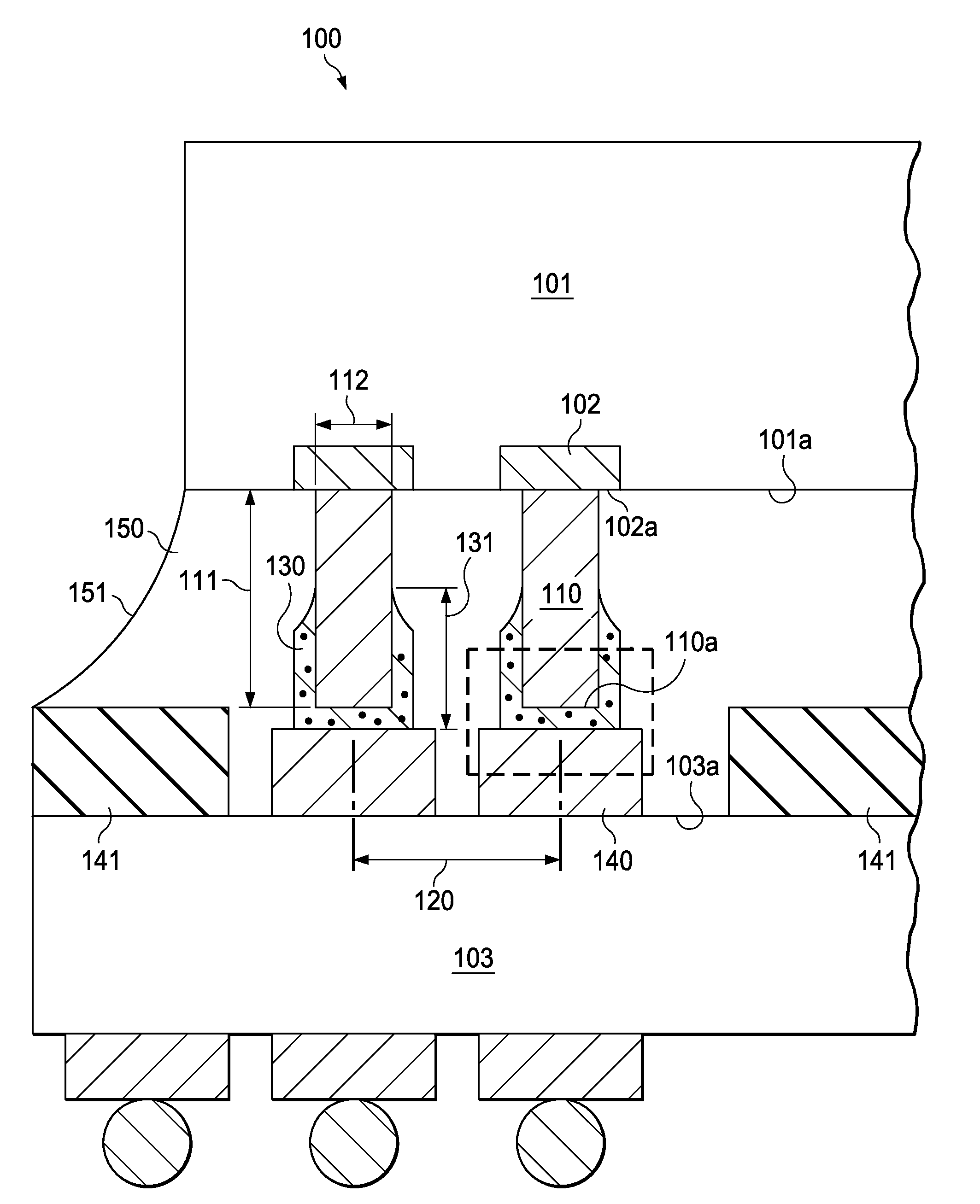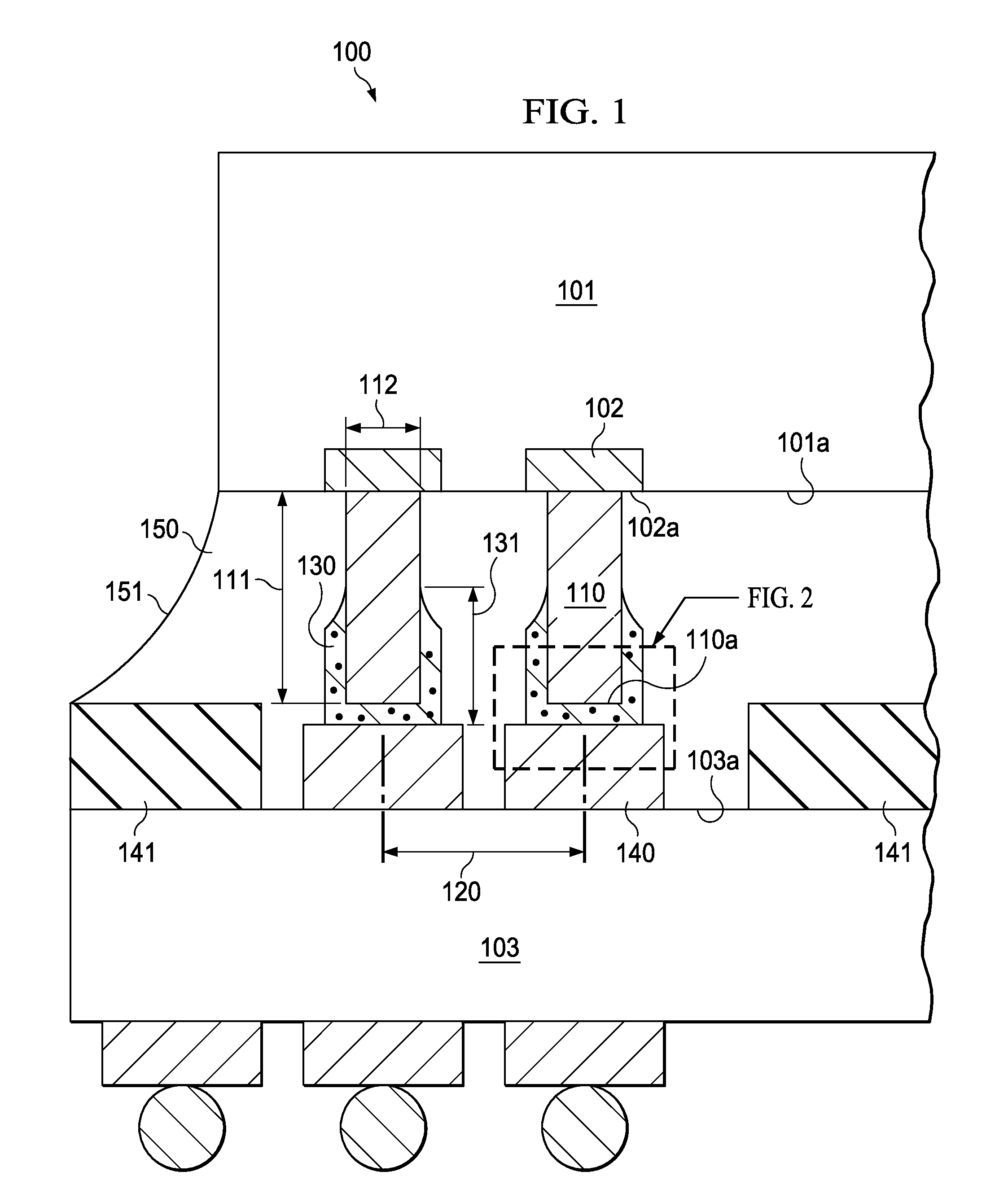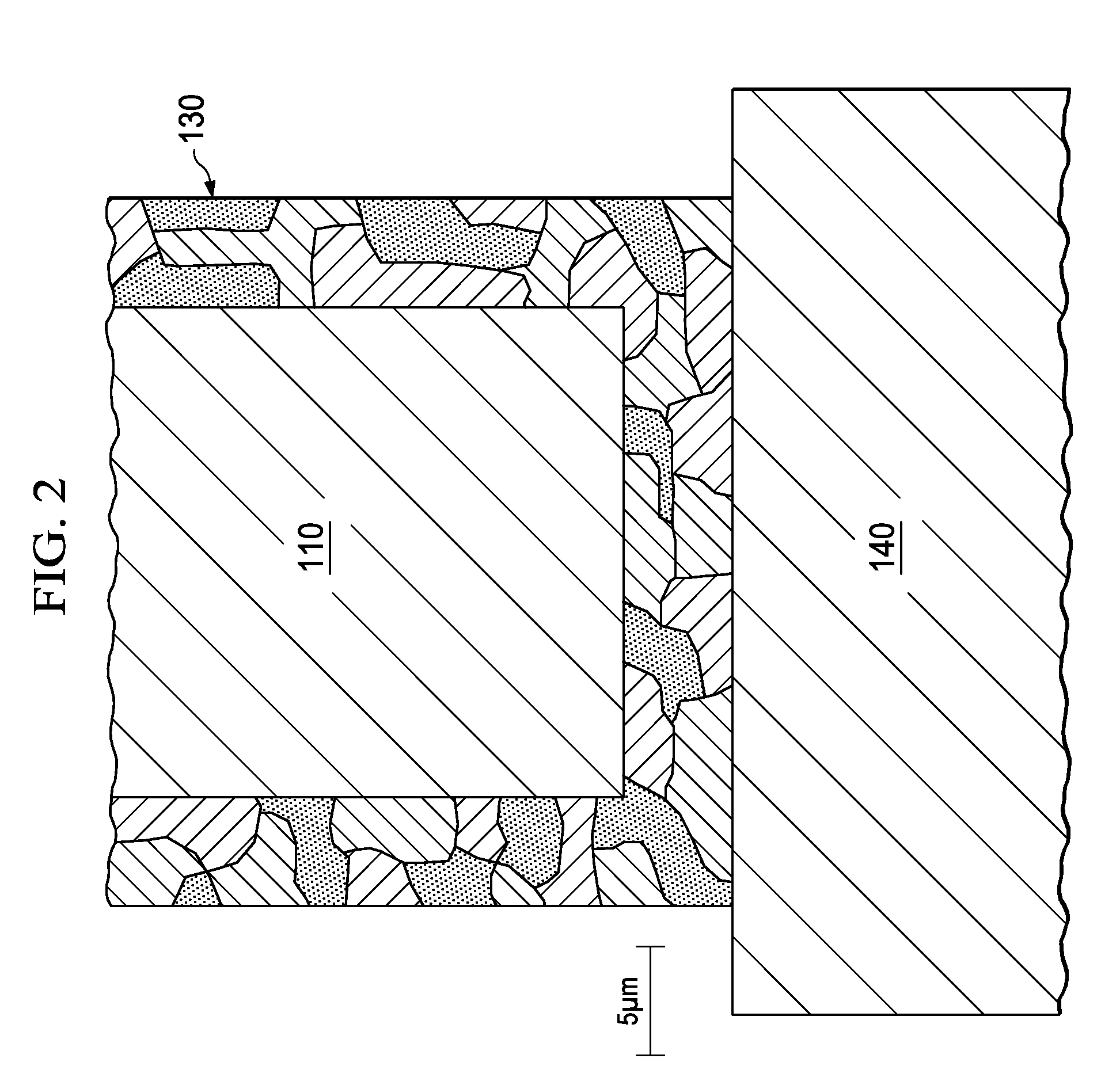Method for low stress flip-chip assembly of fine-pitch semiconductor devices
a technology of flip-chip interconnects and semiconductors, applied in semiconductor devices, semiconductor/solid-state device details, electrical apparatus, etc., can solve the problems of high reliability required in many applications, such as medical applications, inability to tolerate the risk of functional failure by microcracks, time-consuming fabrication flow, and incompatibility, etc., to achieve excellent electrical and thermal conductivity. the effect of high reliability
- Summary
- Abstract
- Description
- Claims
- Application Information
AI Technical Summary
Benefits of technology
Problems solved by technology
Method used
Image
Examples
Embodiment Construction
[0028]FIG. 1 illustrates an exemplary embodiment, generally designated 100, of the invention. A first body 101 with terminals 102 on the body surface 101a is assembled onto a second body 103. In a preferred embodiment of the invention, first body 101 is a semiconductor chip, terminals 102 are metal lands suitable for the attachment of connectors, which are preferably metallic, and second body 103 is an insulating substrate. As an example, terminals 102 may be lands made of copper with a metallurgical configuration of its surface 102a including a nickel layer in contact with the copper, followed by an outermost layer of gold.
[0029]As the example of FIG. 1 shows, attached on each terminal 102 is one end of a metallic connector 110, which is shaped as a column or pillar and oriented substantially perpendicular to the surface 101a. The columnar connector 110 may have cylindrical shape or slightly conical; it has a height 111 and an average diameter 112. Preferably the aspect ratio of he...
PUM
| Property | Measurement | Unit |
|---|---|---|
| aspect ratio | aaaaa | aaaaa |
| temperature | aaaaa | aaaaa |
| temperature | aaaaa | aaaaa |
Abstract
Description
Claims
Application Information
 Login to View More
Login to View More - R&D
- Intellectual Property
- Life Sciences
- Materials
- Tech Scout
- Unparalleled Data Quality
- Higher Quality Content
- 60% Fewer Hallucinations
Browse by: Latest US Patents, China's latest patents, Technical Efficacy Thesaurus, Application Domain, Technology Topic, Popular Technical Reports.
© 2025 PatSnap. All rights reserved.Legal|Privacy policy|Modern Slavery Act Transparency Statement|Sitemap|About US| Contact US: help@patsnap.com



